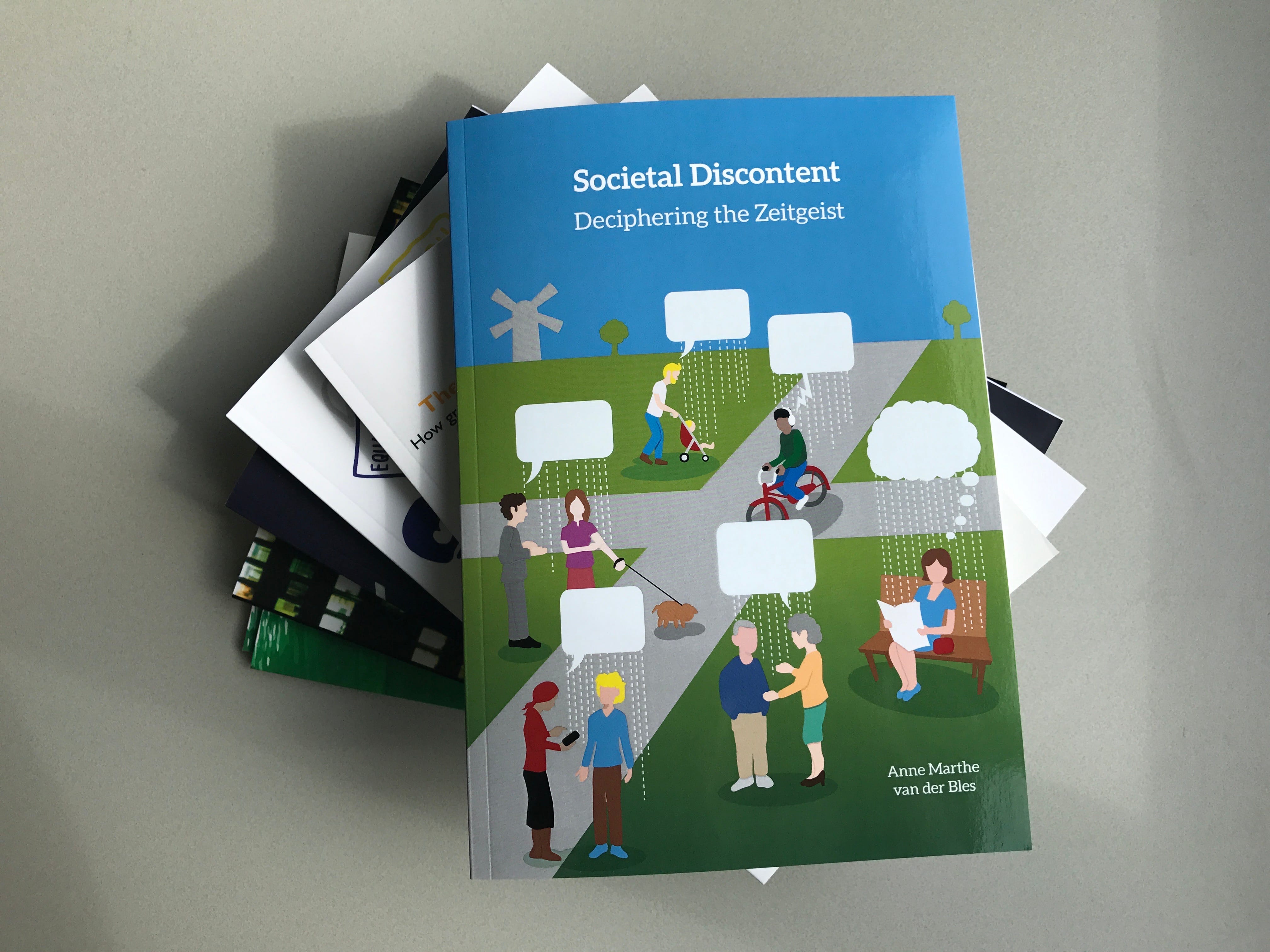
Donald Trump and the Psychology of Doom and Gloom
Factor Z: a new way to understand why voters choose extreme candidates
This article appeared previously on The Scientific American and is co-authored by Sander van der Linden (University of Cambridge).
In the 2016 season finale of the late-night show “Last Week Tonight,” host John Oliver called last year “the worst.” The Oxford dictionaries declared “post-truth” word of the year and Donald Trump won the US presidential election with a campaign that stressed that American society is in decline. Opinion polls conducted in the final months of the campaign showed that 47% of Americans thought life for people like them in the country today is worse than it was 50 years ago; and 49% thought the future would be worse compared to life today. In the UK, the majority of the public voted for Brexit, in part, because of a general sense of discontent with the state of the country. Similarly, populist parties in Europe saw high levels of electoral support in response to messages that their countries are in dire straits.
Understandably, many people have tried to make sense of what happened. Take for example Trump’s election in the United States: Commentators have argued that people voted for Trump because of economic anxiety, negative attitudes toward immigration, religion and race, and “a class rebellion against educated elitists.” While many of these insights may contribute to an explanation, they do not reveal the whole story. For instance, the popular belief that Trump’s voters were mainly working class turns out to be inaccurate.
Instead, new psychological research suggests that it is not necessarily citizens’ personal (dis)content with their lives that matters as much as the perceived Zeitgeist of our time: a powerful shared feeling that society is taking a turn for the worse. In a recent study, one of us, along with colleagues at the University of Groningen, explored how the psychology of doom and gloom reveals how the spirit of our time is influencing people’s decisions about divisive societal issues, such as voting for extremist parties.
“It is not citizens’ personal (dis)content with their lives that matters but the perceived Zeitgeist of our time: a powerful shared feeling that society is taking a turn for the worse.”
Surprisingly, we found that a collectively shared sense of doom and gloom about society can exist among citizens who, individually, experience high personal well-being. Importantly, our study, conducted during the 2015 elections in the Netherlands, showed that it is this collectively shared sense of discontent about society that predicted whether people voted for extreme parties of the right and left, not people’s discontent with their own lives.
This shared feeling of societal discontent can be conceptualized as an aspect of “Zeitgeist,” the “spirit of the times.” Looking back, it seems easy to identify the Zeitgeist of bygone times. For example, think about the Roaring 1920s, with economic prosperity, jazz music, and a general sense of novelty based on the introduction of many new technologies such as cars, movies, and radio. Or think about the Flower Power of the late 1960s, with anti-war movements, psychedelic music, and the Summer of Love. But how can we define and measure the Zeitgeist of our times?
Recent research has found a way to capture, at least in part, the “spirit of the time.” We proposed that while Zeitgeist was originally a concept used by philosophers, it essentially describes a psychological experience. As such, in its broadest sense, the Zeitgeist can be defined as a collection of shared values, attitudes, norms, and ideas that exist within a society at a certain time. Measuring such a general phenomenon is difficult, but we found a way to capture the one aspect we were specifically interested in: our collectively shared awareness about the state of society, which currently is characterized by a sense of doom and gloom.
“Factor Z is an implicit, generalized, collectively shared perception of how society is doing, which “colors” more specific ideas about, for instance, crime, unemployment, or corruption.”
We reasoned that this sense of doom and gloom about society is rather tacit, applies to society as a whole instead of any one specific issue, and relates to something that intuitively “we all know to be true.” Individuals have impressions about the extent to which people in general, are pessimistic or optimistic about the state of society. This implicit, generalized, collectively shared perception of how society is doing “colors” more specific ideas and judgments about society. When we think about, for example, what the state of unemployment is in the US or the extent to which the average American encounters crime, one relevant source of information is this perception of society as a whole: If one’s impression is that America as a whole is doing badly, then one would infer that the situation for a specific issue would be rather negative as well. If we flip this around, it means that if we ask people about their perceptions about a range of specific societal issues, we can extract their impression of the underlying state of society: a general factor Z.
We tested this method in three survey studies in the Netherlands and the US. To measure societal discontent as a general factor Z, we asked people to indicate on how many out of the last 30 days the average person had encountered problems with a range of 12 to 14 issues, such as crime, unemployment, and corruption. The results supported our idea: we could extract one dimension underlying people’s perceptions about life in society, the general factor Z. In short, our approach assumes that there is a latent shared sense of societal (dis)content that influences how bad people perceive things to be for the average person across a range of issues and that this collective sentiment represents a key dimension of the reigning Zeitgeist.
In our recent study, we used this method to investigate whether societal discontent influenced voting for extreme parties. We conducted a field experiment during elections in the Netherlands in 2015. We asked people outside polling stations to fill in a short survey that included our Z-scale. The results showed that compared to the mainstream parties, people with more societal discontent were more likely to vote for the extreme right-wing party PVV (Party for Freedom) and the extreme left-wing party SP (the Socialist Party).
“People with more societal discontent were more likely to vote for the extreme right-wing party PVV (Party for Freedom) and the extreme left-wing party SP (the Socialist Party). Surprisingly, however, people’s personal discontent did not predict voting for more extreme parties.”
We also asked people how many problems they had encountered in their own lives using the same questions, to assess their personal level of discontent. We found that people thought that the average person experienced societal problems more than three times as often as they do themselves. It thus seems that people have a gloomy perception of what life is like for the average person. And, surprisingly, whereas societal discontent predicted voting for more extreme parties, people’s personal discontent did not.
In our earlier research, we also investigated whether societal discontent influences how people interpret news headlines and media stories. We found that people with more societal discontent thought that negative news headlines, such as “US crime rates increase,” were more likely to be true (while this one in particular is not true). They also were more likely to view society as being responsible for incidents that were portrayed in news stories, such as “body of man discovered after lying dead in his house for two years.”
“People with more societal discontent thought that negative news headlines, such as “US crime rates increase,” were more likely to be true”
In short, if a sense of doom and gloom about society can influence people’s voting behavior, it can influence the direction of a country – and it might already have for the US, the UK, and elsewhere. The idea that society is ill or broken and that someone should “shake things up” in order to change this can motivate people to vote for parties or individuals promising such change, even if people themselves do not directly feel the effects of a “broken” society. This seems to work for politicians promising change through a right-wing agenda, such as Donald Trump, as well as a left-wing agenda, such as Bernie Sanders. An important implication of this research is that societal discontent is not about one specific issue, but rather about a range of issues: People are worried about the economy, and immigration, and healthcare, and crime and safety.
So how does this sense of doom and gloom about society emerge and evolve over time? Although we can only speculate at this point, it is evident that our perceptions about reality are partly shaped by the media, who often invoke cynicism rather than optimism about society. In addition, polarization might be an important factor. For example, when polled about the state of the economy, 83% of Clinton voters thought things were “excellent” whereas 79% of Trump voters thought the economy was doing “poorly.” It is therefore perfectly possible for people who are satisfied with their personal lives to be gloomy about society, and vice versa. In short, in understanding the psychology of doom and gloom, it is key to distinguish people’s (dis)content about their personal lives from the knowledge and ideas we collective share that determine the context of our time. As Philosopher George Hegel once wrote “no individual can surpass their own time, for the spirit of their time, is also their own spirit.” Be that as it may, perhaps we can take solace in the fact that we have some power over how we each choose to see the world, and by extension, that offers prospects for the emergence of a more positive and maybe even an optimistic, Zeitgeist.
Anne Marthe van der Bles will defend her thesis “Societal Discontent: Deciphering the Zeitgeist” on Thursday September 27 at 16.15 in the Academy Building of the University of Groningen.



